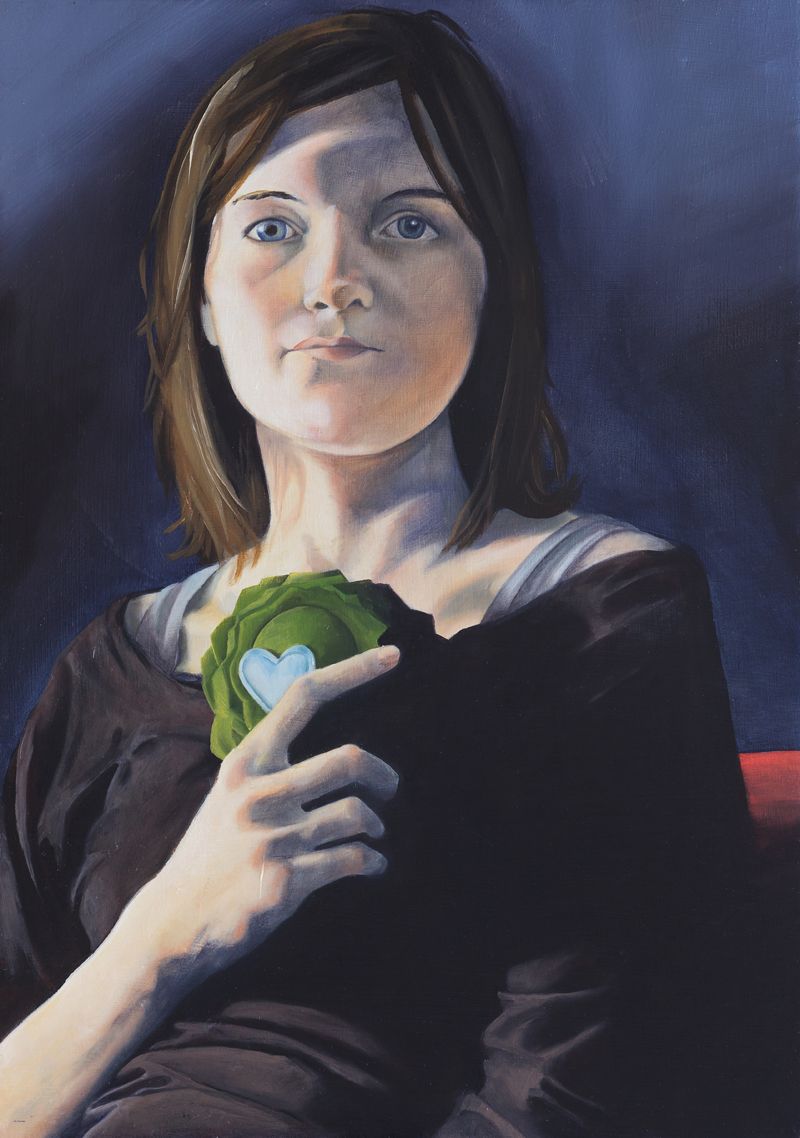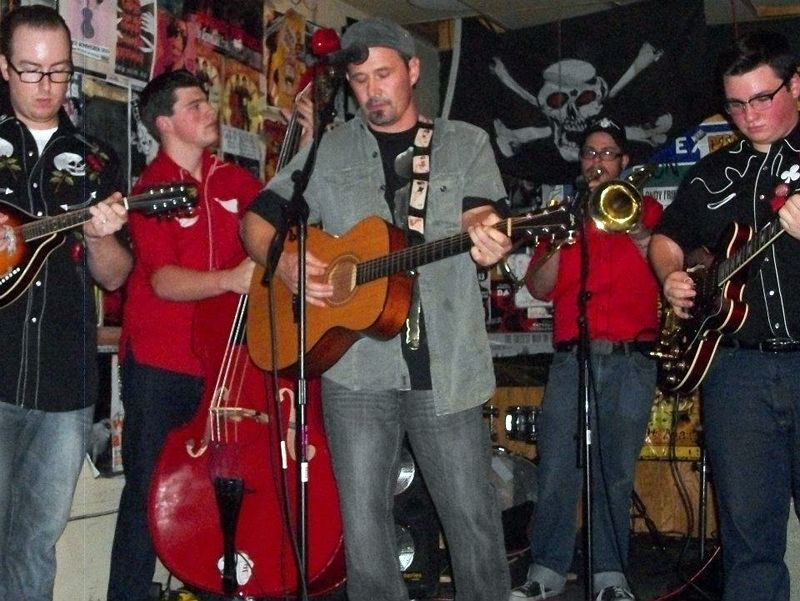Earlier this month Rebecca Stockert succeeded in placing first runner-up visual artist category in the annual whatzup Readers Poll (Whammy Awards). That’s quite a feat in a town with so many active artists. Many folks might remember Becky from The Firefly (another perennial Whammy winner for best coffeehouse) where, in addition to the usual barista duties, she orchestrated the crafts display. Or, if you have managed a visit to Artlink recently, you might have noticed her behind the counter working as scheduler of the gallery’s educational programming. These are positions this young artist has held while advancing her own art education at the University of Saint Francis. As an undergraduate she majored in ceramics; presently she is working on her master’s degree, only this time concentrating on painting and printmaking.
Stockert is working in the vein of art known as pop surrealism, a movement that began back in the late 70s, partly in reaction to the steady elevation of mainstream fine art to high-end galleries and drawing rooms after WWII. Pop surrealism, also known as low-brow art, deliberately aims low, drawing inspiration from cartoons and other graphics already extant in popular culture but not normally given a “fine art” assignation. Inspiration is taken from automotive art, music posters, graffiti, tattoos and animé, for example. Figures and objects are freely manipulated and juxtaposed for provocative content. However, execution is usually handled in a very traditional style, which further distances this movement from the expressionistic and abstract paths of earlier rebels.
A popular trend in underground art for a few decades, pop realism is now ironically in danger of occupying the same mainstream perch it eschewed at its inception. In fact, it’s flagship publication, Juxtapoz magazine, recently outsold every other art periodical, including Art News.
While the work of many pop surrealists is intentionally garish, Stockert’s small oil paintings and prints stand out in their simplicity and subtler nuance. They call to mind the quiet poetry of the earlier surrealist René Magritte, whose work differed in the same way from his more sensational contemporary, Salvador Dali. Like Magritte, Stockert manages to imbue simple, ordinary objects with a hint of playfulness and deeper meaning.
For subject matter, Stockert, who has a young son, found herself surrounded by the trappings of childhood and began to use these new props in her art, employing little stuffed animals as models for etchings and oil portraits. Some creatures are her own creations, like her series of little characters drawn with wide TV-screen-shape faces and footed union suits. These childlike figures are referred to as “Monsters,” because, if parenthood has taught Stockert one thing it’s that “children are cute, but they’re also little monsters.”
Anyone having 24/7 experience with small fry gets what she means; our children not only wreak havoc with our lives, but, owing to the intensity of our attachment to them, are potentially a parent’s worst nightmare should anything bad happen to them. That motherhood has a double-edge is not lost on Stockert, and her willingness to accept the bad along with the good also makes her a sharper artist.
So far, mostly toys and stuffed dolls (at least one made by artist Clare Tarr) have born the brunt of her newly informed perspective. She brings to them a quiet intensity, confronting the viewer with a full-frontal presentation of the stuffed dolls resting on a flat, patterned background. They look almost as if they are pinned there like specimens we should contemplate and learn from. These little paintings are somehow too mysterious for a child’s room; they belong in the study.
Oils are a medium that she is currently embracing under the tutelage of Justin Miller at USF.
“I’ve discovered that I really love oil painting and printmaking,” she says, citing Tom Keesee as her printmaking instructor.
“I love painting fabrics. I want to show the texture of them, whether they are shiny or soft, the sharp edges of the folds … the values of lights and darks.”
Recently the fabric animals have given way to real live fur, as Stockert has been painting her own pets or those of friends. And she has shown a flair for portraiture, having painted her own portrait as well that of her son Ezra. He brings the “Monster” series full circle by donning a monster hat in his portrait, and Stockert lets the jagged shadows from the sawtooth trim on the cap fall across her child’s face. This shadow is a very unusual device to use in child portraiture, a wee bit dark. But it’s inclusion is what sets Rebecca Stockert apart from the pack.
What lies ahead for this artist?
“My current projects are an exploration in where I fit in the Midwest. I am trying to find my Midwestern voice, or the Midwestern voice, in general,” she states.
And how does pop surrealism figure into this exploration?
“A trend with my contemporaries is that we are all trying to find our place in the world, just like every generation before us. We are heavily influenced by postmodernism; however, tradition is not as important as it once was. We are making our own traditions. I feel like we are reaching back to pre-20th Century traditions in art more than our predecessors, who cast it off,” she says, referring to the abstractionists and expressionists and Dadists who have gone before.
“We are creating a new world that combines what you [might] refer to as the techno and tradition.”


